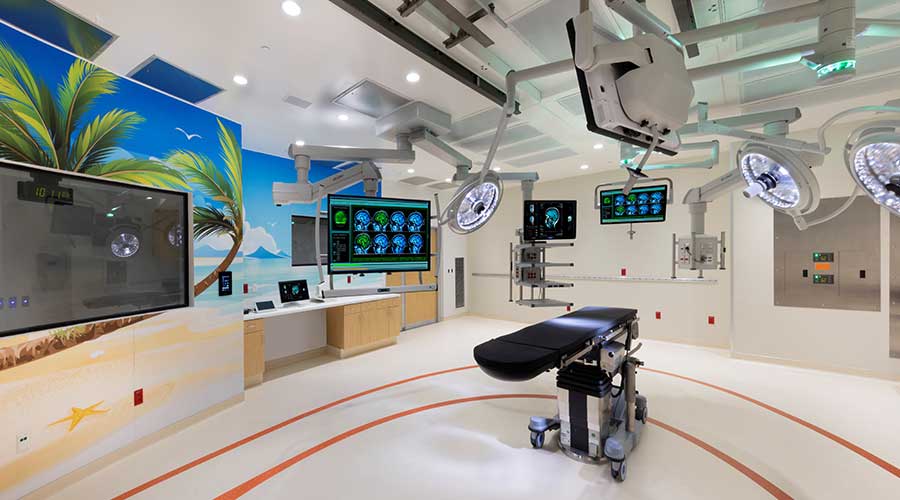In a rapidly shifting economy, the healthcare industry is shifting, too. As the pandemic drives massive changes in technology and consumer preferences, many healthcare systems are reimagining their campuses by building alternative care models and expanding into new communities. With these opportunities for growth, there are also new challenges arising every day.
Supply chain issues are increasing construction costs and delaying construction schedules. A recent report indicates that prices of construction materials used in new nonresidential construction jumped more than 21 percent from February 2021 to February 2022.1 Add to that volatile weather conditions and labor shortages, and the result is a mix of potential disruptions that easily could throw a healthcare construction project off course.
Addressing these potential challenges requires facilities managers who can work closely with multiple project stakeholders, including administrators, facility staff members, subcontractors and crews to ensure the alignment of timelines, ongoing activities and contingency plans. By using these three strategies, healthcare and construction managers can work together to minimize potential disruptions.
Plan for the unexpected
Healthcare construction projects usually involve hundreds of participants, from designers and contractors to building materials suppliers and facility staff members. One key challenge when managing large-scale healthcare construction is ensuring the work is as invisible as possible to hospital staff who need to continue to safely do their jobs and maintain top-quality care for patients. Planning becomes a vital part of the equation to help identify and address potential hurdles and key milestones.
Managers or project superintendents should be designated early as go-to contacts for the entirety of the project, which can last from three months to several years. As a first step, these field leaders need to consider market conditions, from procurement logistics to supply chain issues, and review material and equipment needs at least 20 weeks out to determine alternative solutions.
Using a lean process helps project leaders more effectively set project schedules, establish necessary work sequences and determine construction feasibility from the design phase to construction work on-site. Critical utility and service interruption shutdown processes and requirements, which often vary by healthcare organization, are also important considerations. Field leaders must predict the project footprint and status up to eight weeks in advance and determine the best way to manage patient flow, utility and life safety system support, interim exits, and workflow modification.
Check project health daily
The stakes are higher on healthcare construction projects with patient and staff safety at risk. That is why ongoing dialog between the construction team members and healthcare project owners is vital and involves frequent notifications, in addition to weekly work summaries on accomplishments, necessary adjustments and pending deadlines.
Instead of simply relaying tasks, construction field leaders should drive proactive communications with department heads and staff members. In most cases, this will mean daily rounds or weekly meetings, based on project complexity, with stakeholders to address potential concerns and discuss safety issues and utility interruptions. It is essential to convey the real impact of each accomplished task to quantify the influence of the actual work.
Using technologies like building information modeling, which provides a 3D visualization of projects, drives collaboration and advances dialog around potential issues so they can be resolved before the shovel hits the dirt.
Make safety a top priority
Since the onset of the COVID-19 pandemic, there has been heightened awareness for infection prevention, and hospitals are increasingly concerned about ensuring the crews they partner with have the right credentials to ensure patient protection. It is critical for managers to ask about what training and certifications each firm has and look for testimonials from other healthcare system administrators.
Construction field leaders need to act with urgency and delegate with composure. This behavior is important, especially when managing safety issues inside a healthcare facility’s walls. These risks can range from more daily issues, such as noise control and indoor air quality, to even more urgent concerns such as hospital-acquired-infection control and facility security.
Some ways in which managers can ensure the well-being of patients, staff and workers during construction projects include:
- encouraging healthy habits of their workers and monitoring crews on site
- creating action plans for traffic patterns and work separation
- following robust infection control and dust mitigation practices
- continued education and training for personnel working with AHSE and OSHA.
Demonstrating constant awareness of the healthcare building’s physical environment — for example, the mechanical and plumbing infrastructure — is also crucial to isolating the work and ensuring other parts of the hospital remain operational. Managers need to address a multitude of special environmental issues, from emergency and normal power distribution and fire alarms to water quality management and hazardous material storage. Having a team that prioritizes advance planning, constant communication and safety throughout construction projects can help managers maintain flexibility in the face of a rapidly changing market.
Chris Meier, LEEP AP, is a project executive with Riley Construction headquartered in Kenosha, Wisconsin. He has more than 20 years of project management experience and is responsible for the successful acquisition, launch and execution of healthcare construction contracts.

 Authorities Issue Joint Advisory on RansomHub Ransomware
Authorities Issue Joint Advisory on RansomHub Ransomware 9 Steps to a Successful Healthcare Capital Project
9 Steps to a Successful Healthcare Capital Project Steward Health Care to Sell Wadley Regional Medical Center in Texarkana
Steward Health Care to Sell Wadley Regional Medical Center in Texarkana Texas HHSC Breaks Ground on New Terrell State Hospital
Texas HHSC Breaks Ground on New Terrell State Hospital Enhancing Behavioral Healthcare with Thoughtful Design
Enhancing Behavioral Healthcare with Thoughtful Design